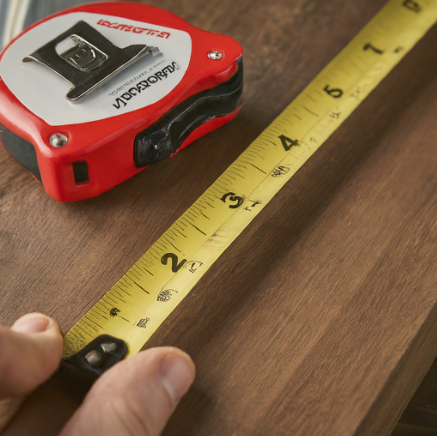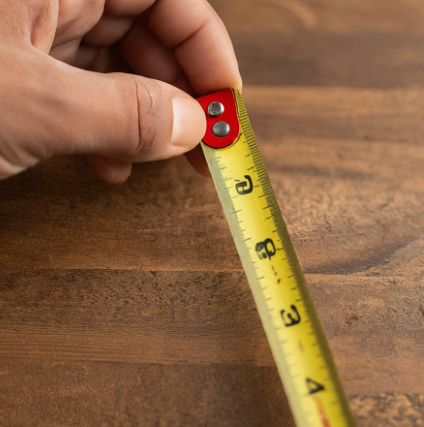Demystifying the tape measure doesn’t have to be a challenge! This comprehensive guide empowers you to conquer any measurement with confidence, whether you’re a seasoned DIY enthusiast or a curious beginner. Buckle up and get ready to unlock the secrets of reading tape measures in inches!
Deciphering the Lingo: Key Terms Explained
- Inch: The fundamental unit of measurement on most standard tape measures.
- Foot: 12 inches make up 1 foot.
- Fraction: Smaller subdivisions of an inch, typically marked as 1/2, 1/4, 1/8, and 1/16.
- Markings: Lines on the tape measure indicating different measurements.
- Hook: The metal end of the tape used for anchoring the measurement.

Navigating the Tape Measure Landscape:
Types of Tape Measures:
- Standard: The classic choice, offering affordability and durability.
- Easy-Read: Features bold markings and large numbers for enhanced visibility.
- Fractional: Clearly displays fractions of inches for precise measurements.
- Metric: Ideal for projects requiring metric units like centimeters and millimeters.
- Digital: Provides electronic readings and often additional features like memory and area calculation.
Choosing the Right Tool:
Consider your project requirements, budget, and desired features when selecting a tape measure. Standard or easy-read options are excellent for basic tasks, while fractional or metric tapes cater to specific needs. Digital models offer advanced functionality for complex projects.

Unveiling the Measurement Mysteries:
Reading Inches:
- Locate the large, bold numbers – these represent whole inches.
- Identify the smaller lines between inch marks. Each line represents a fraction of an inch:
- Longer lines typically signify 1/2 inch.
- Shorter lines often denote 1/4 inch.
- Even smaller lines usually represent 1/8 inch.
- The smallest lines typically indicate 1/16 inch.
- Add the whole inches to the identified fractions to obtain your final measurement.
Example: If the hook is at the 3-inch mark, and the next line is a short one (1/4 inch), your measurement is 3 1/4 inches.
Reading Fractions:
- Tape measures often display common fractions like 1/3, 5/8, or 3/16 directly.
- Simply add these fractions to the nearest whole inch for your measurement.
Tips & Tricks:
- Look for tape measures with clear markings and contrasting colors for better readability.
- Start by aligning the hook at the beginning of your measurement point.
- Hold the tape measure taut without stretching it.
- Read the measurement at eye level for accuracy.
- Practice makes perfect! The more you use a tape measure, the more intuitive it becomes.

Beyond the Basics: Advanced Techniques for
Mastering the fundamentals of reading a tape measure is essential...
Read MoreMastering Tape Measure Readings: A Beginner’s
Feeling intimidated by that jumble of lines on your tape...
Read MoreConquer Your DIY Dreams: Mastering Tape
Unleash your inner handyman (or handywoman!) with the essential guide...
Read More


